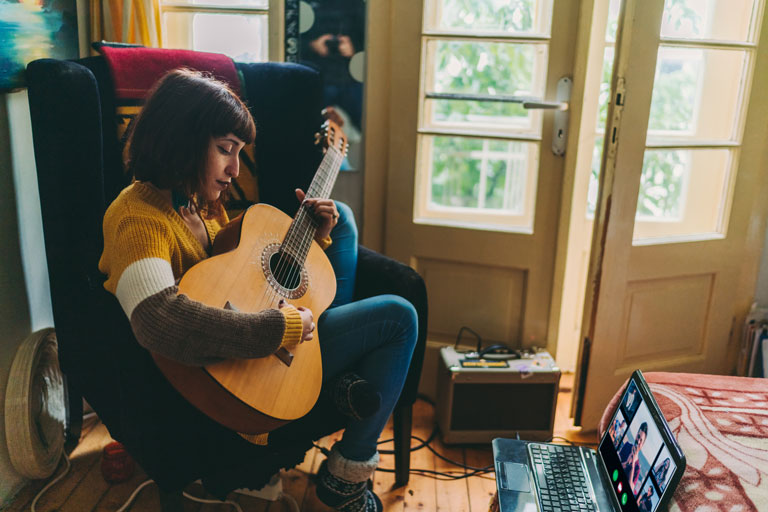May 28, 2020
The COVID-19 pandemic has impacted the global arts sector in unprecedented ways. Museums had to close their doors. Concerts were cancelled. Artists who perform on urban streets were forced indoors due to stay-at-home orders.
IUPUI’s Doug Noonan and colleagues from the Arts, Entrepreneurship, and Innovation (AEI) Lab are working to understand how the outbreak has impacted the arts sector. They hope it will help inform conversations about what the industry will be like after the pandemic.
A key focus of the AEI Lab is on the gig economy—characterized by the lack of an ongoing relationship with a single employer and made up of freelancers and independent contractors. The term gig economy might bring to mind images only of ridesharing drivers, but the concept of a gig economy actually comes from the arts sector. The connection between that type of work and the COVID-19 outbreak is all too relevant.
“The notion of a gig economy has come out a lot in our socially-distanced economy,” said Noonan, a professor at the Paul H. O’Neill School of Public and Environmental Affairs at IUPUI and co-director of the AEI Lab. “The arts sector has been using ‘gigs’ for generations. So we have taken the approach of thinking about how artists are gigging during the pandemic.”
Noonan and his team are watching how artists and organizations cope with the pandemic by shifting to online platforms and remote delivery.
“Where community and in-person shared experiences are part of the value, there is a big concern about whether these online, remote experiences will stick around,” Noonan said. “Where communal experiences are supposed to be part of it, what does it mean for the arts sector now that people are streaming alone at home?"
The researchers have been monitoring online platforms like Kickstarter—a crowdfunding platform for creative projects—to track the changes in activity occurring as a result of the pandemic. Have more artists flocked to these platforms to encourage sharing their work and raise funds? Are artists who may have only used low-tech ways to share in the past now using these online platforms, or is it just artists who have always embraced a more high-tech approach to sharing?
Noonan said the team plans to share initial findings on June 8 at a virtual symposium, New. Not Normal: Artists, the Creative Sector, and Innovation after the Pandemic, hosted by the Center for Cultural Affairs. The focus is on entrepreneurship, innovation, and reimagining the creative sector after COVID-19. Speakers and panelists from a variety of industries are set to participate.
“Out of this crisis and disruption comes opportunity,” Noonan said. “The symposium’s live, interactive roundtables will host some messy conversations around that new world, featuring an incredible lineup of practitioners and scholars from in and around the cultural sector.”
While we are only a few months into the COVID-19 pandemic, Noonan acknowledges that what has happened in the past few months may have lasting results. He hopes the work of the AEI Lab will help inform decision-makers—whether they be leaders of large organizations, funders, or policymakers at the state or local level—about the shifts happening in the industry.
“When we come out of this, it won’t be the same,” Noonan said. “We’re reimagining the entire sector after the outbreak, including how we fill seats and conduct ticket sales. We need to have informed conversations now, and we hope to help facilitate those to prepare the arts sector in navigating changes when the pandemic is over.”



